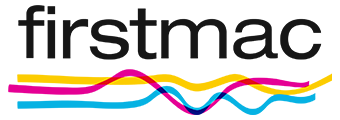A growing number of Australians are taking advantage of Self-Managed Super Funds (SMSF) to finance their retirements.
As at June 2024, there were more than 625,000 SMSFs in Australia holding around $990 billion in assets. The top assets, by value, are listed shares (28% of total SMSF assets) followed by property at 21%. Indeed, with high growth in property values over recent years, more SMSFs are borrowing to purchase property in a bid to grow their members' retirement savings.
But taking out an SMSF loan to fund residential and commercial property purchases is not like taking out a regular investment property home loan. There are certain rules that must be followed when borrowing for an SMSF investment.
What is Limited Recourse Borrowing Arrangement (LRBA)?
One way for SMSFs to borrow money is through Limited Recourse Borrowing Arrangements (LRBA) loans. This means if there’s a default on the loan, the lender is limited only to the investment purchased when recouping the what's owing on the loan.
Essentially, an LRBA is a financial arrangement that dictates SMSFs can purchase property with borrowed money, with the property held in a separate trust – known as a ‘bare trust’ – until the loan is repaid. That way, in the event there’s a default on the loan, the lender can only seize and sell the asset held in the trust and cannot pursue any other assets of the SMSF or its members.
LRBAs were introduced in 2007 to allow SMSFs to borrow money for medium- to long-term periods. Prior to this, SMSFs were only able to borrow for certain short-term situations. The superannuation rules were updated again in 2010 and LBRAs have since become a popular choice for funds investing in property and other assets.
One advantage of an LRBA is that it allows the SMSF to invest in assets that it may not otherwise be able to afford with the aim of boosting the fund’s returns for the benefit of its members. Let’s check some of the conditions of an SMSF loan.
See also: Tips and Guides for SMSF Loans
Rules of investing using a LRBA
The rules of LRBA investing can be summarised as follows:
-
Borrowed money can only be used purchase a single acquirable asset
If the SMSF wants to purchase more than one asset, it will need to take out a loan for each separately. -
The loan can only be used to purchase the property
It cannot be used to improve, renovate, or maintain it. -
The asset will be held in a separate bare trust
The SMSF trustee will have a beneficial interest in the trust but not legal ownership of the asset while it is being paid off. -
The SMSF trustee has the right to take over legal ownership when the loan is repaid
-
The lender only has recourse to the single asset purchased in the bare trust
No other assets of the SMSF can be seized to repay the loan.
What is a single acquirable asset?
SMSFs can use LRBAs to borrow to acquire a single asset per loan. In property terms, this can be a residential, commercial, or farming property, but one loan must be taken out for each property separately. Generally, a single acquirable property asset is considered a property with one title.
If the SMSF is borrowing to purchase securities, loans must cover each parcel of shares for one entity separately. A portfolio of different shares or managed funds could not be managed under the terms of an LRBA.
How do SMSF loans differ from other property loans?
SMSF property loans tend to be more costly than other property loans as lenders consider them to be higher risk. The lender will need to be satisfied the fund will have the cash flow to service the loan repayments, allowing for current and future retirement pension payments or lump sum withdrawals.
From an SMSF point of view, loan documents and contracts need to be properly set up for SMSF borrowing, often requiring the services of a licensed financial specialist.
It’s also worth noting here that an SMSF can’t make alterations or change the character of a property until it pays off the SMSF property loan. It can, however, repair and maintain it.
What is the sole purpose test?
Any property or asset acquired by the SMSF with borrowed funds must meet what’s called the ‘sole purpose test’.
Under the test, the property must be purchased solely for the purpose of generating retirement benefits for members of the SMSF.
SMSFs are not allowed to borrow to invest in properties owned by a related party of a SMSF member. The purchased property can also not be lived in or rented by a fund member or any fund member’s related parties.
However, if the SMSF purchases a commercial premises, it can be leased to a fund member for their business, as long as it is leased at market rates and specific rules are followed.
Features of SMSF loans
Loan size
Generally, lenders will stipulate the maximum loan-to-value ratio (LVR) for an SMSF loan is 70%, although there are lenders who’ll accept up to 80% LVR.
Loan purpose
The SMSF loan must only be used to acquire a property. Funds cannot be used to improve or alter a property’s structure. Any property maintenance and other related expenses must be financed using other funds from within the SMSF.
Options after the loan term
SMSF loans typically have terms of up to 20 years, although some lenders will offer terms up to 30 years. At the end of the term, the SMSF has the option to either repay the loan and acquire full ownership of the asset or sell it before the term ends.
As is often the case with a normal home loan, when the property is sold, the proceeds will pay off any outstanding amount owed on the loan and any other associated costs. Any leftover will go to the SMSF.
The table below features lenders who specialise in SMSF loans with some of the lowest interest rates on the market:
Lender Home Loan Interest Rate Comparison Rate* Monthly Repayment Repayment type Rate Type Offset Redraw Ongoing Fees Upfront Fees Max LVR Lump Sum Repayment Extra Repayments Split Loan Option Tags Features Link Compare Promoted Product Disclosure
Promoted
Disclosure
Disclosure
Disclosure
SMSF loans with personal guarantees
To get around limited recourse on SMSF loans, some lenders may ask for a personal guarantee from members of the SMSF. Under current laws, this is permitted provided the guarantor’s rights are limited to the asset being acquired.
As with any guarantor loan arrangement, it could put members' personal assets at risk if there's a default on the SMSF loan. Essentially, a personal guarantee means if the SMSF is unable to service the loan and a balance is owed after any property foreclosure sale, the lender can come after the guarantor/s' personal assets.
Some lenders may be willing to negotiate personal guarantees terms. Some may even be willing to accept a higher deposit or a higher interest rate in lieu of a personal guarantee to secure the loan.
A specialist SMSF mortgage broker may be able to assist you in securing the loan terms and conditions that best suit your circumstances.
Complexities of SMSF loans
Once an SMSF loan is formally approved, the structure will be vetted by the lender’s legal department. It’s estimated that between 55% and 60% of legal structures can fail this step, which can lead to delayed settlements and penalty interest being applied.
It’s also worth noting Australia’s big four banks haven’t engaged in SMSF lending since 2018 due to the complexities of investigating SMSF ownership structures and ensuring the loans are legally sound.
Some loan applications can fail due to a lack of knowledge of what is permissible. Given the highly technical and specialised nature of SMSF borrowing, it's worth engaging the services of a specialist SMSF mortgage broker or financial advisor to ensure the property contract and loan structure are legally sound and fit for purpose.
First published in March 2023
Speak to an SMSF lending specialist
Whether you're looking to refinance or purchase investment property with your SMSF our partners can help you find the right SMSF home loan.
Collections: SMSF







Share